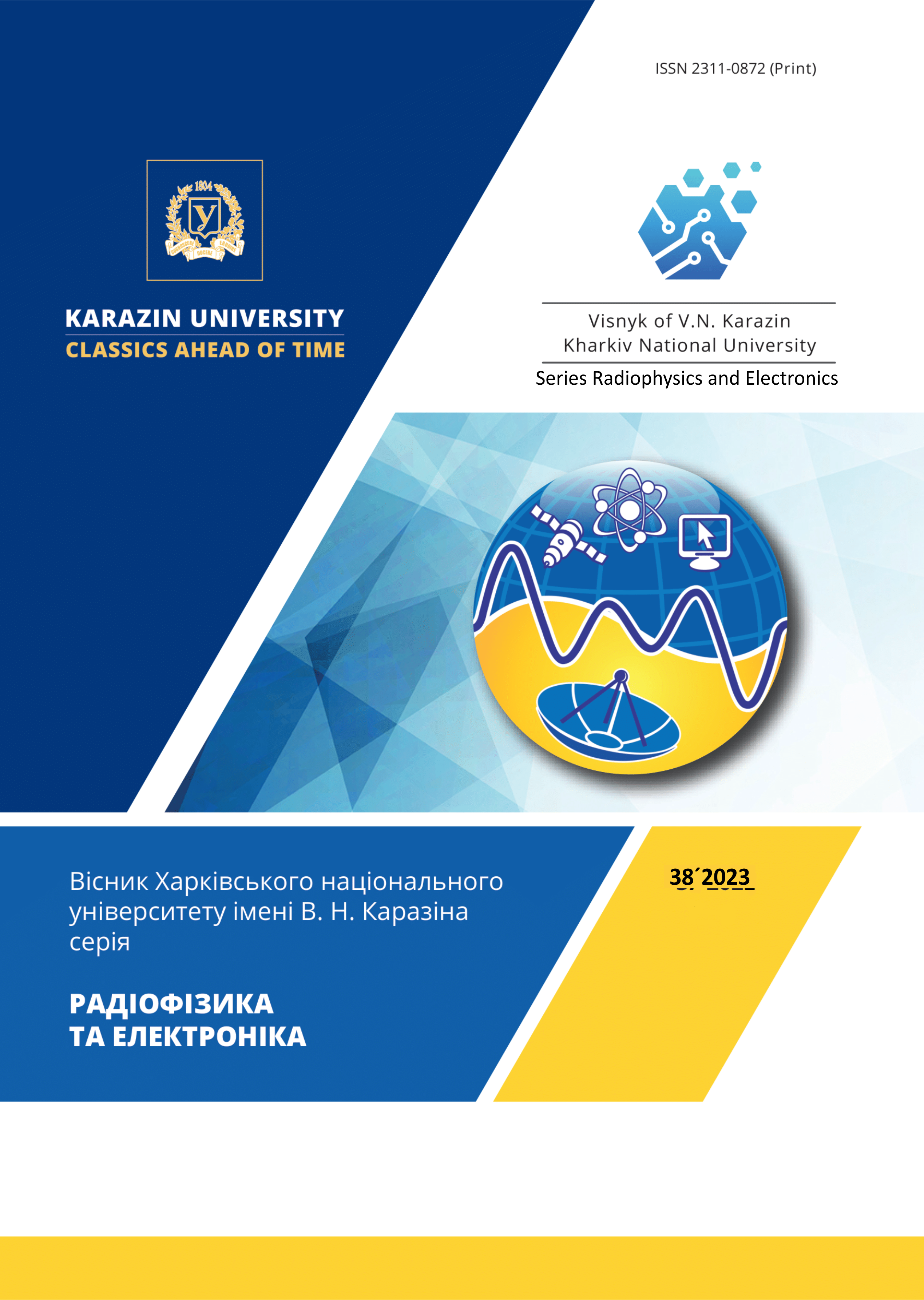UWB positioning system without the use of time synchronization
Abstract
Relevance. The present day cannot be imagined without the widespread use of positioning of moving objects. Global positioning systems have entered almost all areas of modern life. However, these systems also have their drawbacks, primarily inefficiency in dense buildings, indoors, with rapid movement of receivers, and sensitivity to intentional interference. In addition, the most common positioning systems require costly time synchronization of the highest quality of all transmission systems. In addition to the well-known traditional narrowband systems, ultra-wideband positioning systems are being actively developed and are considered promising.
Purpose of the work. The aim of this work is to build an efficient and time-synchronization-independent positioning system based on the angular dependence of the radiated waveform for pulsed ultra-wideband antennas. The absence of the need for rigid time synchronization is based on the phenomenon of changes in the antenna pattern with frequency and, accordingly, changes in the time shape of the radiated wave. It is proposed to detect these changes using artificial neural networks. In this paper, unlike the previous ones, we propose a solution to the problem of uncertainty in the time of arrival of the pulse from the base station.
Materials and Methods. The electrodynamic part of the problem is solved using the direct numerical method of time-domain modeling (FDTD). This makes it possible to obtain accurate time shapes of waves radiated by antennas at different angles when they are excited by ultrashort pulses. The pulse recognition at the receiving point is realized by an artificial neural network in real time without preliminary spectral analysis, which ensures high system speed processing.
Results. A new artificial neural network has been built and trained that can reliably recognize received pulses, even if the exact time of their arrival is unknown. This network was tested on artificially noisy received signals. A threshold noise level was found, exceeding which leads to significant errors in determining the receiver's coordinates.
Conclusions. The positioning system based on pulsed ultra-wideband waves has been improved by extended training, which makes it much less dependent on the pulse arrival time, which can be theoretically arbitrary. Thus, it is shown that the proposed system may not require time synchronization of transmitting and receiving devices. The stability of the positioning system up to a signal-to-noise ratio of 20 dB was shown. The recognition results can be improved by using fundamentally different time dependencies of the excitation pulse signals for each antenna.
Downloads
References
Fujii A, Sekiguchi H, Asai M, Kurashima S, Ochiai H, R. Kohno. Impulse Radio UWB Positioning System. 2007 Jan 1; https://doi.org/10.1109/RWS.2007.351756
Lin KH, Chen HM, Li GJ, Huang SS. Analysis and Reduction of the Localization Error of the UWB Indoor Positioning System. 2020 Sep 28; https://doi.org/10.1109/ICCE-Taiwan49838.2020.9258017
Kian Meng Tan, Choi Look Law. GPS and UWB Integration for indoor positioning. 2007 Jan 1; https://doi.org/10.1109/ICICS.2007.4449630
Schroeer G. A Real-Time UWB Multi-Channel Indoor Positioning System for Industrial Scenarios [Internet]. IEEE Xplore. 2018 [cited 2023 Apr 21]. p. 1–5. Available from: https://ieeexplore.ieee.org/document/8533792 https://doi.org/10.1109/IPIN.2018.8533792
Nakamura A, Shimada N, Itami M. Performance Analysis of UWB Positioning System at the Crossing. 2018 Nov 1; https://doi.org/10.1109/ITSC.2018.8569309
H. F. Harmuth, “Nonsinusoidal Waves for Radar and Radio Communication,” New York: Academic Press, 1981.
Pochanin GP, Orlenko OA, Ruban VP, Korzh VG, Andreev MV, Drobakhin OO. Antenna pattern measurements: UWB impulse and multifrequency signals comparison. 2017 May 1; https://doi.org/10.1109/ICATT.2017.7972581
Dumin O, Plakhtii V, Persanov I, Cao S. Positioning System Using Classification of Ultra Short Electromagnetic Pulse Forms by ANN. 2020 IEEE 15th International Conference on Advanced Trends in Radioelectronics, Telecommunications and Computer Engineering (TCSET). 2020 Feb; https://doi.org/10.1109/TCSET49122.2020.235460
Persanov I, Plakhtii V, Pryshchenko O, Dumin O, Fomin P. Noise Immunity of UWB Positioning System on ANN. 2020 IEEE Ukrainian Microwave Week (UkrMW). 2020 Sep 21; https://doi.org/10.1109/UkrMW49653.2020.9252637
Dumin O, Plakhtii V, Pryshchenko O, Pochanin G. Comparison of ANN and Cross-Correlation Approaches for Ultra Short Pulse Subsurface Survey. 2020 IEEE 15th International Conference on Advanced Trends in Radioelectronics, Telecommunications and Computer Engineering (TCSET). 2020 Feb; https://doi.org/10.1109/TCSET49122.2020.235459
Persanov I, Dumin O, Plakhtii V, Shyrokorad D. Subsurface Object Recognition in a Soil Using UWB Irradiation by Butterfly Antenna. 2019 XXIVth International Seminar/Workshop on Direct and Inverse Problems of Electromagnetic and Acoustic Wave Theory (DIPED). 2019 Sep; https://doi.org/10.1109/DIPED.2019.8882577
Wang J, Su Y, Huang C, Lü M, Liu Y. Design of bow-tie antenna with high radiating efficiency for impulse GPR. 2012 Jul 1; https://doi.org/10.1109/IGARSS.2012.6351524
Ahmed El-Rabbany, Introduction to GPS: The Global Positioning System, Second Edition , Artech, 2006.
Elliott Kaplan; Christopher Hegarty, Understanding GPS/GNSS: Principles and Applications, Third Edition , Artech, 2017.




